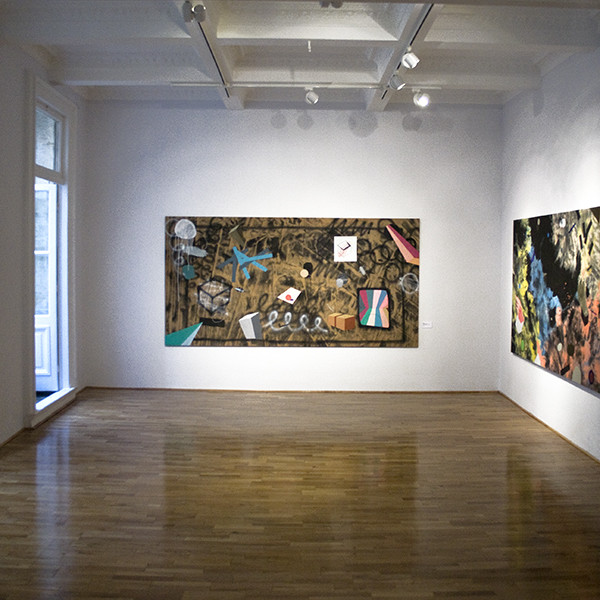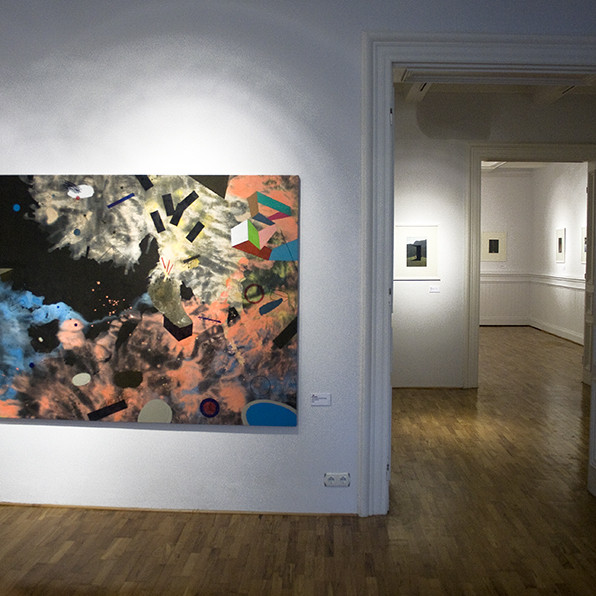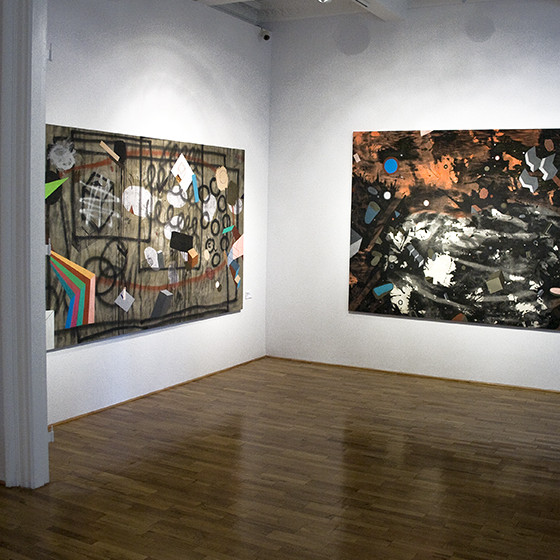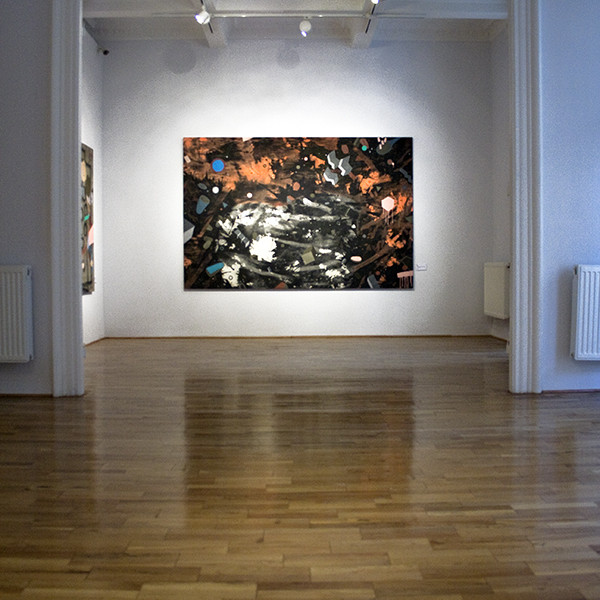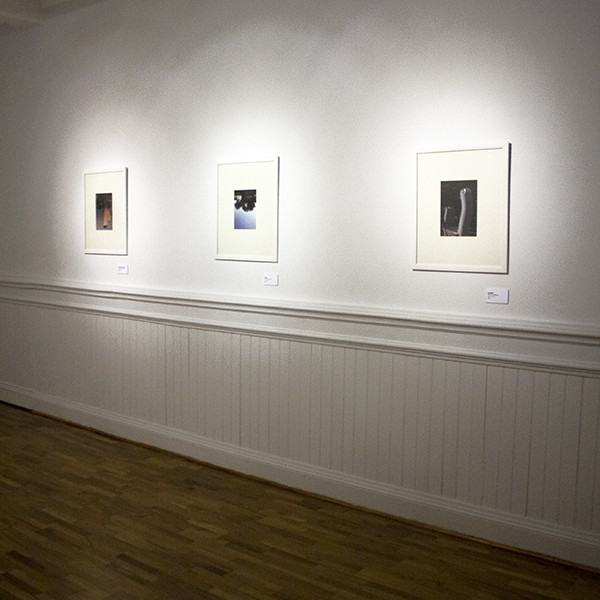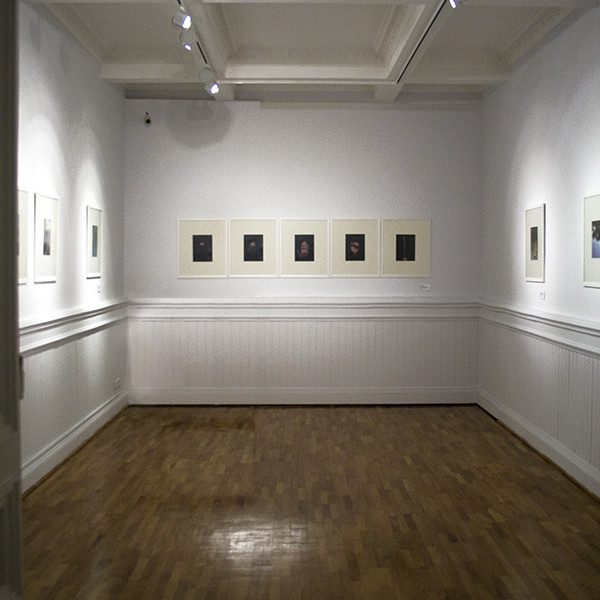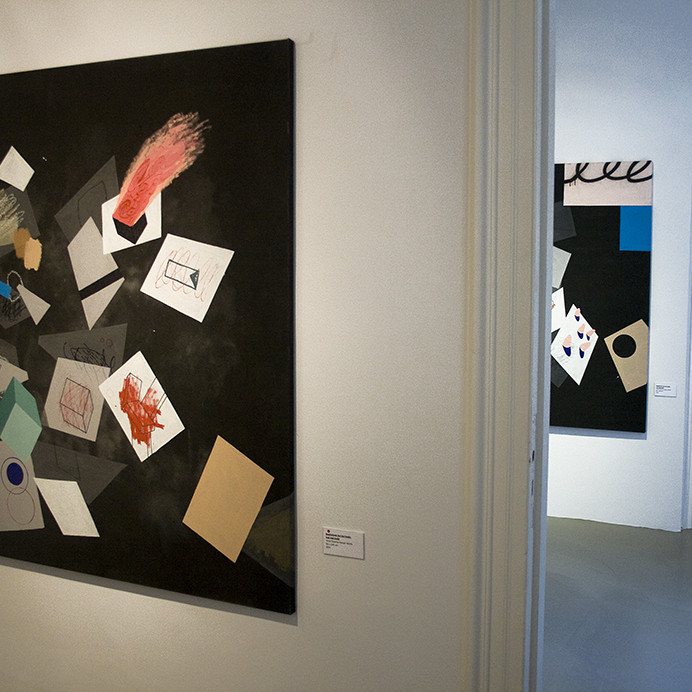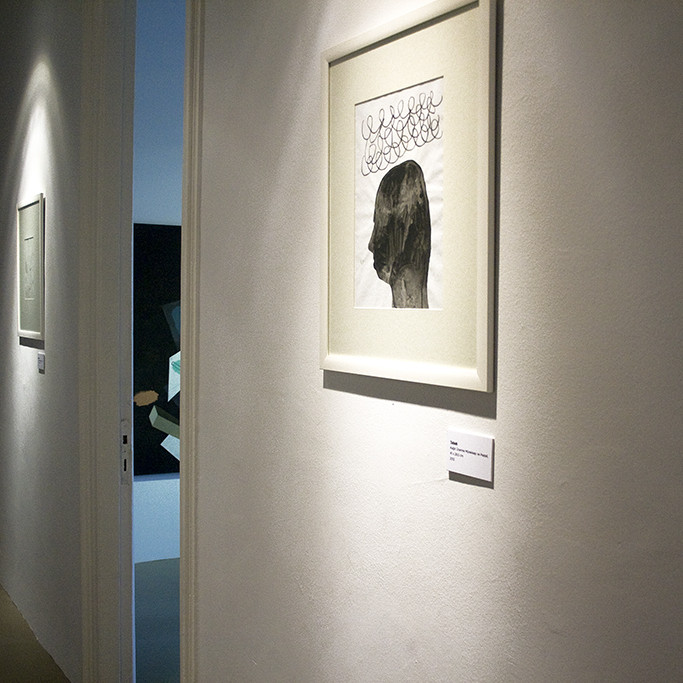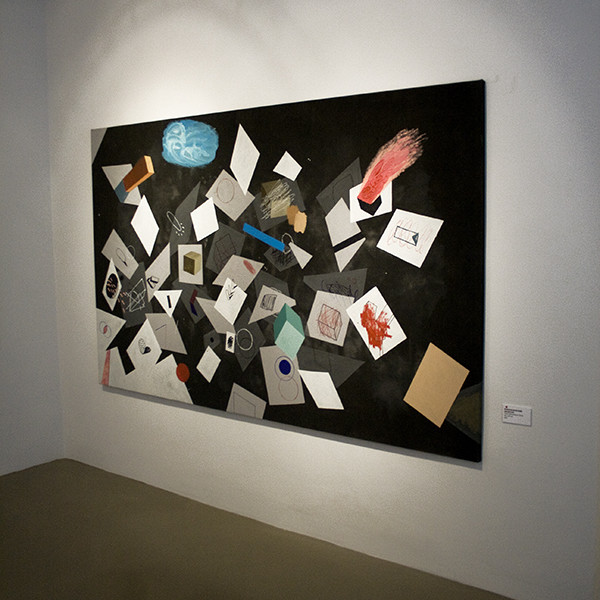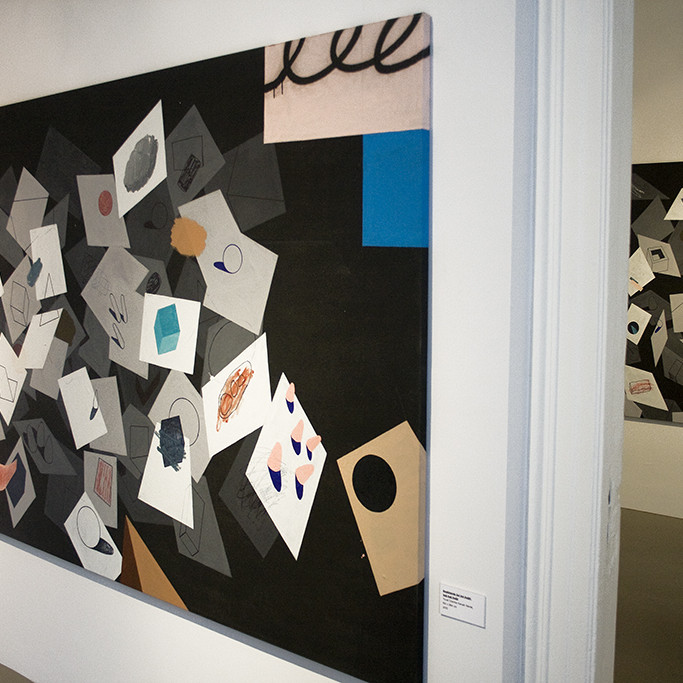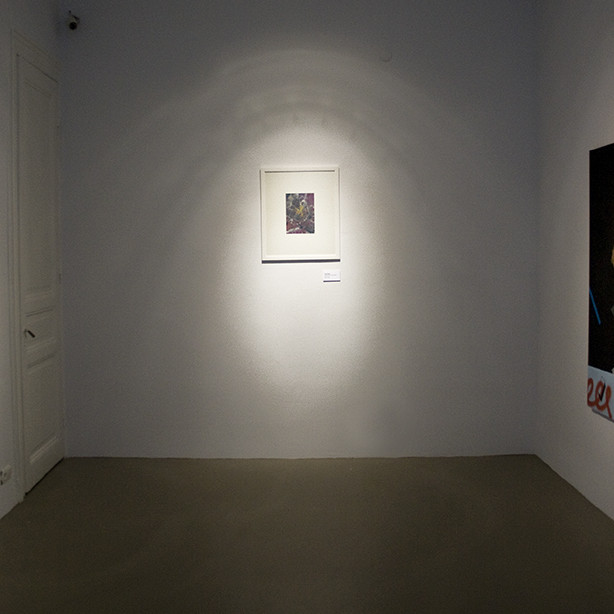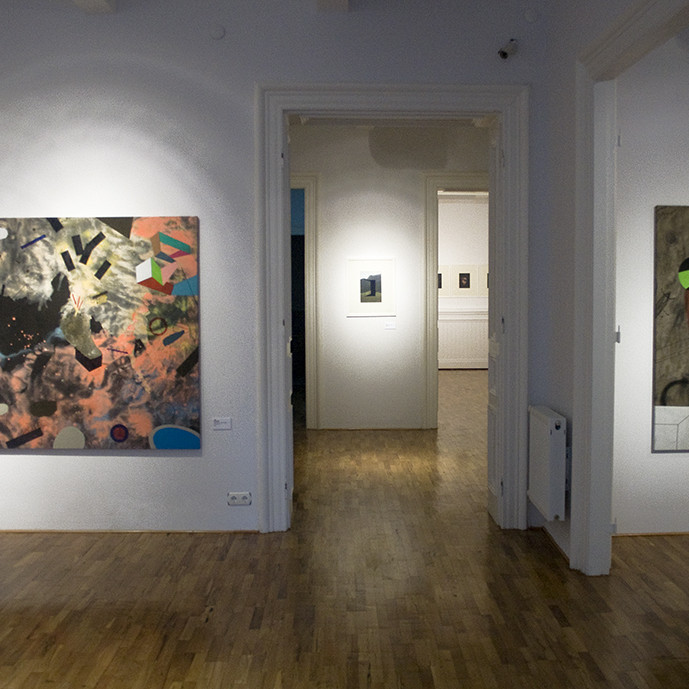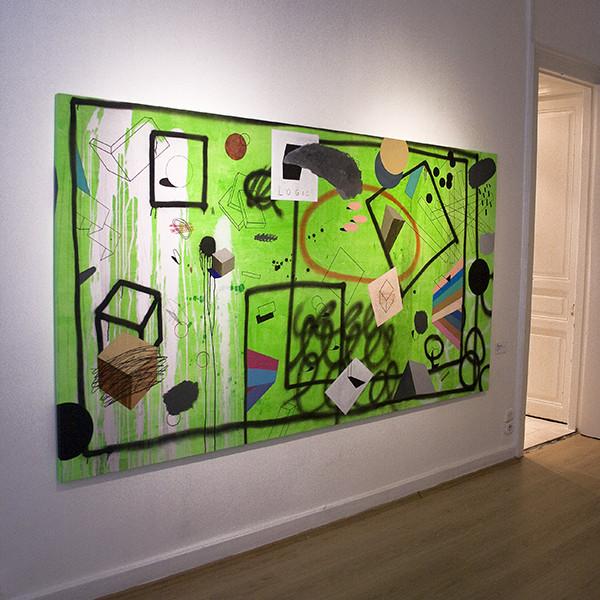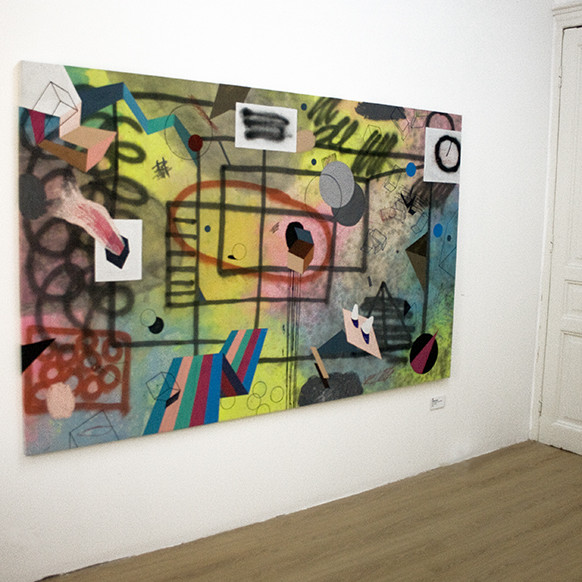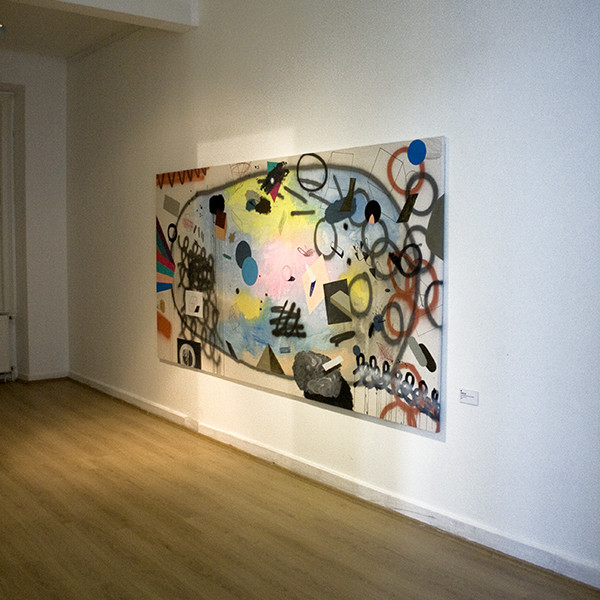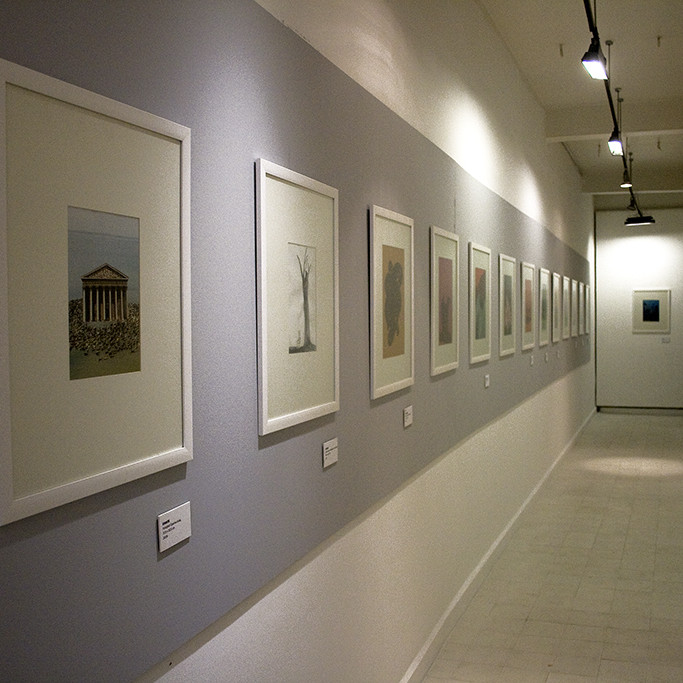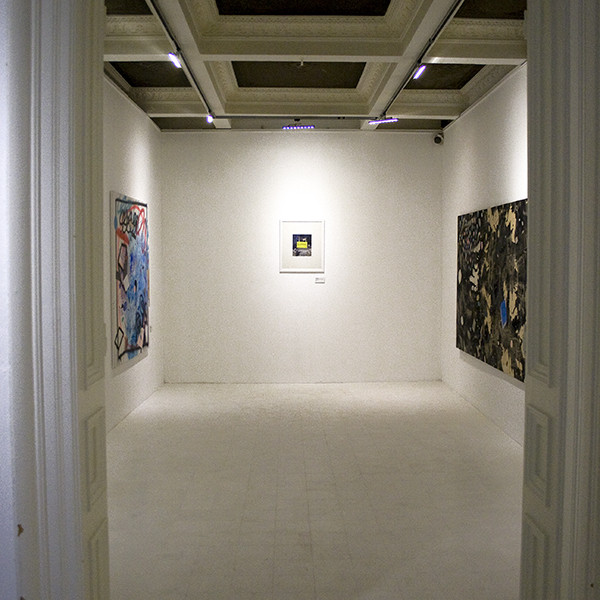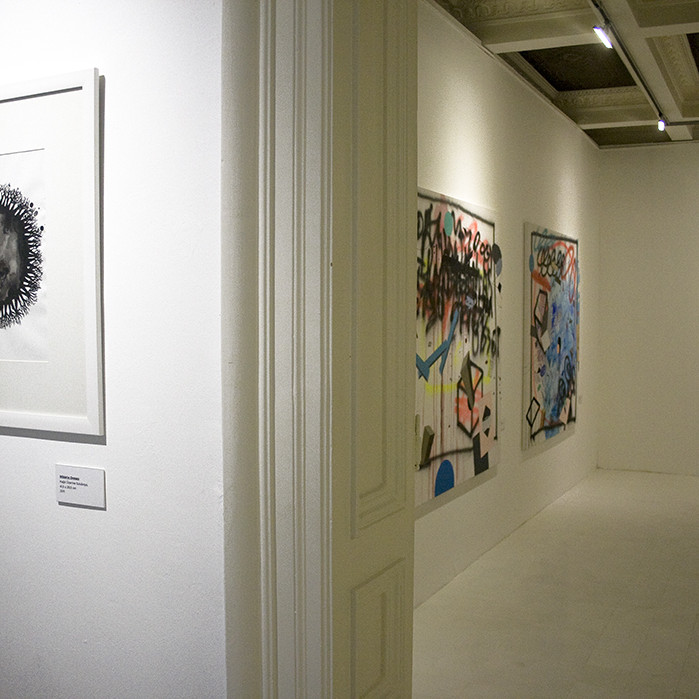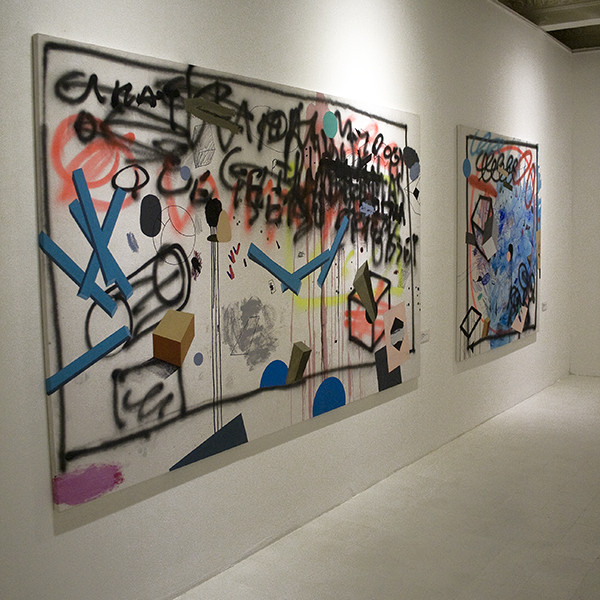CUTFINGERISM / KARSI SANAT CALISMALARI / 2013
Volkan Diyaroğlu or Developing the Imagination
Mehmet Ergüven
When leafing through the newspapers, I was caught up in a photograph. Apparently, this photograph has another feature other than not being able to cover its content; at least for me. Thus, I did not need to read the regarding text; because, after getting over the first striking impact and looking at the photograph carefully, it becomes very obvious for anybody who follows the current events more or less. Environment of uncertainty and tension in Egypt after the elections.
However, it is hard to say that the said photograph supports this. In fact, just the contrary is in question for me: Everything is in the original position as if it was planned before and this shows us the formation opportunity of the unknown according to a different logic in the preferred arrangement. So, when looking at the place where the figures are located, leaving the sectioned view aside, we can see that even the figures, the matches of which can easily be noticed in the outer world, get rid of their loads of representation.
At this stage, what the said photograph evidences, loses its importance automatically and becomes our concern in another platform. The base plan of untreated presence.
Indeed, though it is very suitable for a comprehensive comparison, without getting into details for now, let us just be satisfied with indicating only this: The paintings of Volkan Diyaroğlu also owe the procreative (open-ended) indefiniteness mostly to this implicit base plan. The leaded result leaves no room for doubt: Searching for the match of the thing in the outer world, which lends the being its shape, is a trap which beforehand restrains entering into a dialogue with the said paintings.
Without doubt, the border line between the figure, which is recognizable merely because of its location in the base plan, and the abstract, in other words the amorph structure, cannot be cancelled automatically; but there is no other way for provoking the insistent look, in order to try to see later.
On the other hand, while we are examining the works of art of Volkan, we come across a very important hint: We have an artist right in front of us, who tries to work out everything as best as he can, without being charmed by the act of painting – cautious but as bold as brass who seeks the ordinate within the inordinate. Therefore, the illusion of coincidence in the composition here, mostly because of a principled production model which resists the coincidence. Behind this model, we come across two pairs of concepts related to each other; to say the least, we find a way to get into the painting world of Volkan quietly, by the help of these concepts. The first one of these concepts is to design / to imagine and the other is to set up / to fictionalize.
Within this context, let’s underline this point first: Composition, made as a result of an arrangement, that is placing side by side (con-ponere); is always formed through setting it up – or let us formulate like this: In fact, every fictionalization is a result of a set up process which prioritizes it. But a set up act, which sets working like a laborer forth, is a matter of subject here. Regarding the sticking to a set up act without bringing the fictionalization to the forefront, this is the guarantee of the fiction in the final analysis.
Imagination, by definition, covers the image of the end at the very beginning. Therefore, majorly the dominant feature of a work of art, which arises from imagination, is its being completed by starting from the end and proceeding towards the beginning.
When we look at Leave Your Paradox at Home, under the light of this determination, we come across a sequence of concrete hints regarding the painting language of Volkan. Let’s underline immediately: When he starts painting, Volkan does not try to predict the final scene (arrangement) which will be formed at the end; because when he puts an end, after proceeding step by step, in any case he will see that he meets the painting that he imagined. This also shows that the painting proceeds in the way of setting up, rather than fictionalization. Moreover, first of all a conscious discipline is included in the movement area of the creative freedom in a production model like this, without a doubt.
In the contemporary painting, another important subject, which gains visibility, is the act of painting being located on canvas as a sign. Painting is like a logbook of the production process in such works. The movements of the brush, which can be followed, even partially are the records regarding the one who has a body indeed. For Deluze, this visibility, which has a tactual feature, cancels the visibility of the result of the sign of the painting and instead, places the sign of the painting itself.
The act of painting as a sign, in a position which can be followed, is a hint about the record of instant life – it is a situation about mentally being on the brink of something. This act, hiding within the result and being unable to be followed, gives us the opportunity to read the life more comprehensively and to go into subjectivity from various aspects (privacy?).
It is obvious that Volkan is very discreet about this subject. Hence, though he sometimes forces the borders of the calculated ones, he always bestows a right to the arbitrary in a restricted manner. In other words, here, the sign of the painting being visible as a result in the first place, gives way to the feature of consciousness to be questioned, instead of a comprehensive interpretation of the meaning of life.
Hence, let’s emphasize the following fact once more: all of these make clear that we face with a production model mainly consisting of designing and setting up, which are among the concept pairs that we mentioned above; and it is not surprising that this is also the guarantee of the cautious outburst which stands aloof from imagination and fictionalization.
It is always open to discussion, to what extent the topic (name) of a painting, that we are settling with, is the determinant. It is very doubtful if this name is given later and arbitrarily, especially like we witness in the work of Volkan. However, though the house in this painting cannot be seen, in terms of the usual arrangement logic, it is obvious that the paradox has left its mark all over the surface of the canvas. In other words, almost all illusion tools like the light, color, shadow, size and etc. are in a paradoxical relation with the visible (recognizable) one, though they serve for a semantic concern. The paradox, within the context of a multidirectional perspective, is an illusion of organic integrity in this painting, which has the possibility of beating itself up. According to this, the articulation process is the effort to direct the potential rupture between the differences, that is, the invitation to the paradox as a prepared dilemma, to the harmonious integrity. Obviously: In this example we come across the tamed chaos with the guarantee of consciousness feature of the silence in the respect to all directions, within the context of visual language.
Let us try to paraphrase with some concrete examples without getting into detail. The first and the most impressive one reveals itself with the existence of two dimensional surface (touching the surface of the canvas) being together side by side as a result of the illusion of size. Volkan, as some kind of a dramatis personae, while designing the rectangular boxes at the center of the painting as three-dimensional, is also leaving the distributed circles, which are included (scattered) with the intention to be rubbed, in a position of being integrated with the surface of the canvas. Indeed, as the center at which the looks should be focused, is competing with the big white spot on the right, we also have to take this with a pinch of salt like we do to most of the others. But it is easy to say this: Volkan is producing by using a model which treats the entire surface of the canvas equally; because the more the focus of concern spreads all over the canvas via setting up process, the more it contributes to the production process; and hence the production process which tends to be hasty, circumstantially, finds the chance to catch ultimately in the total of the coincidences which have been staved.
On the other hand, though the setting up and designing works take place simultaneously in the production process, the rigorous working method of shaping the boxes with hard edges, does not fail to make room for the random flow of the acrylic paint or for free and quick sketching when appropriate. In fact, Volkan is arranging and setting up this feature and the likes, each of which can be evaluated separately in the language of contemporary art, in a paradoxical relation one by one and vice versa.
Proceeding a little bit further, we can see more clearly what it is to be meant by paradox: The freedom of expression in formation. Again we come across one of the concrete examples for this, with the circles. The brush, while fading from the scene of the empty circles (rings), gives its place to some kind of a printing process and skillfully underlines the individuality which leaves a mark in the process, in the ones that were formed by the brush in the upper left corner and this skill, which is the extension of the consciousness feature, is indeed continuing in all the details of the painting in the final analysis.
Again in this direction, beyond the light, which comes out from various sources and is distributed to different directions, the main thing worth to consider, appears before us in the shadow of a pair of two dimensional empty rings, which is just in the middle (fictitious center?) of the arrangement: Here the shadow clearly points at a three-dimensional sphere, not at the ring; and this shows us the ironical game of the paradox with the impossible.
Volkan, instead of facing the results of the abstraction blindly, resists surrendering to the figure indeed. In this case, we see that the imagination, which arises by the guarantee of setting up the arrangement as con-ponere, is a chaotic feast which is once again ready to be arranged each time – harmonious togetherness of the figures which strengthen their existences with the relation between their locations.
Finally, let’s go back to the beginning and look at the photograph taken in Egypt: This harmonious togetherness in the photograph, which evidences the opponents after the coup d’état, shares the victory of the one that is explored by the setting up method, with us here; moreover, by shaking without raising difficulties in the discrimination of alive / non-living, figure / abstract.
2013

